Resource retrieval
Get the pre-trained net:
NetModel parameters
This model consists of a family of individual nets, each identified by a specific parameter combination. Inspect the available parameters:
Pick a non-default net by specifying the parameters:
Pick a non-default uninitialized net:
Basic usage
Given a piece of text, the RoBERTa net produces a sequence of feature vectors of size 768, which correspond to the sequence of input words or subwords:
Obtain dimensions of the embeddings:
Visualize the embeddings:
Transformer architecture
Each input text segment is first tokenized into words or subwords using a word-piece tokenizer and additional text normalization. Integer codes called token indices are generated from these tokens, together with additional segment indices:
For each input subword token, the encoder yields a pair of indices that correspond to the token index in the vocabulary, and the index of the sentence within the list of input sentences:
The list of tokens always starts with special token index 1, which corresponds to the classification index.
The special token index 3 is used as a separator between the different text segments, marking the end and beginning (except the first) of each sentence. Each subword token is also assigned a positional index:
A lookup is done to map these indices to numeric vectors of size 768:
For each subword token, these three embeddings are combined by summing elements with ThreadingLayer:
The transformer architecture then processes the vectors using 12 structurally identical self-attention blocks stacked in a chain:
The key part of these blocks is the attention module comprising of 12 parallel self-attention transformations, also called “attention heads”:
BERT-like models use self-attention, where the embedding of a given subword depends on the full input text. The following figure compares self-attention (lower left) to other types of connectivity patterns that are popular in deep learning:
Sentence analogies
Define a sentence embedding that takes the last feature vector from RoBERTa subword embeddings (as an arbitrary choice):
Define a list of sentences in two broad categories (food and music):
Precompute the embeddings for a list of sentences:
Visualize the similarity between the sentences using the net as a feature extractor:
Train a classifier model with the subword embeddings
Get a text-processing dataset:
View a random sample of the dataset:
Precompute the RoBERTa vectors for the training and the validation datasets (if available, GPU is highly recommended):
Define a network to classify the sequences of subword embeddings, using a max-pooling strategy:
Train the network on the precomputed vectors from RoBERTa:
Check the classification error rate on the validation data:
Let’s compare the results with the performance of a classifier trained on context-independent word embeddings. Precompute the GloVe vectors for the training and the validation dataset:
Train the classifier on the precomputed GloVe vectors:
Compare the results obtained with RoBERTa and with GloVe:
Net information
Inspect the number of parameters of all arrays in the net:
Obtain the total number of parameters:
Obtain the layer type counts:
Display the summary graphic:
Export to MXNet
Export the net into a format that can be opened in MXNet:
Export also creates a net.params file containing parameters:
Get the size of the parameter file:

![NetModel["RoBERTa Trained on BookCorpus, English Wikipedia, CC-News, \
OpenWebText and Stories Datasets"]](https://www.wolframcloud.com/obj/resourcesystem/images/d69/d69b5646-3ef6-42a8-ab78-8b3d56a67a5e/398f709e9fac0cd7.png)

![NetModel["RoBERTa Trained on BookCorpus, English Wikipedia, CC-News, \
OpenWebText and Stories Datasets", "ParametersInformation"]](https://www.wolframcloud.com/obj/resourcesystem/images/d69/d69b5646-3ef6-42a8-ab78-8b3d56a67a5e/36f51196003f5c84.png)

![NetModel[{"RoBERTa Trained on BookCorpus, English Wikipedia, CC-News, \
OpenWebText and Stories Datasets", "Type" -> "Large", "InputType" -> "ListOfStrings"}]](https://www.wolframcloud.com/obj/resourcesystem/images/d69/d69b5646-3ef6-42a8-ab78-8b3d56a67a5e/6c1156b49c4891d3.png)
![NetModel[{"RoBERTa Trained on BookCorpus, English Wikipedia, CC-News, \
OpenWebText and Stories Datasets", "Type" -> "Base", "InputType" -> "ListOfStrings"}, "UninitializedEvaluationNet"]](https://www.wolframcloud.com/obj/resourcesystem/images/d69/d69b5646-3ef6-42a8-ab78-8b3d56a67a5e/5147b3121ab80a4d.png)
![input = "Hello world! I am here";
embeddings = NetModel["RoBERTa Trained on BookCorpus, English Wikipedia, \
CC-News, OpenWebText and Stories Datasets"][input];](https://www.wolframcloud.com/obj/resourcesystem/images/d69/d69b5646-3ef6-42a8-ab78-8b3d56a67a5e/12b1ede0c92e4be1.png)

![net = NetModel[{"RoBERTa Trained on BookCorpus, English Wikipedia, \
CC-News, OpenWebText and Stories Datasets", "InputType" -> "ListOfStrings"}];
netencoder = NetExtract[net, "Input"]](https://www.wolframcloud.com/obj/resourcesystem/images/d69/d69b5646-3ef6-42a8-ab78-8b3d56a67a5e/75ba6e117fbda2be.png)
![embeddings = net[{"Hello world!", "I am here"},
{NetPort[{"embedding", "embeddingpos", "Output"}],
NetPort[{"embedding", "embeddingtokens", "Output"}]}];
Map[MatrixPlot, embeddings]](https://www.wolframcloud.com/obj/resourcesystem/images/d69/d69b5646-3ef6-42a8-ab78-8b3d56a67a5e/0bc5b92a1fbbcfaf.png)

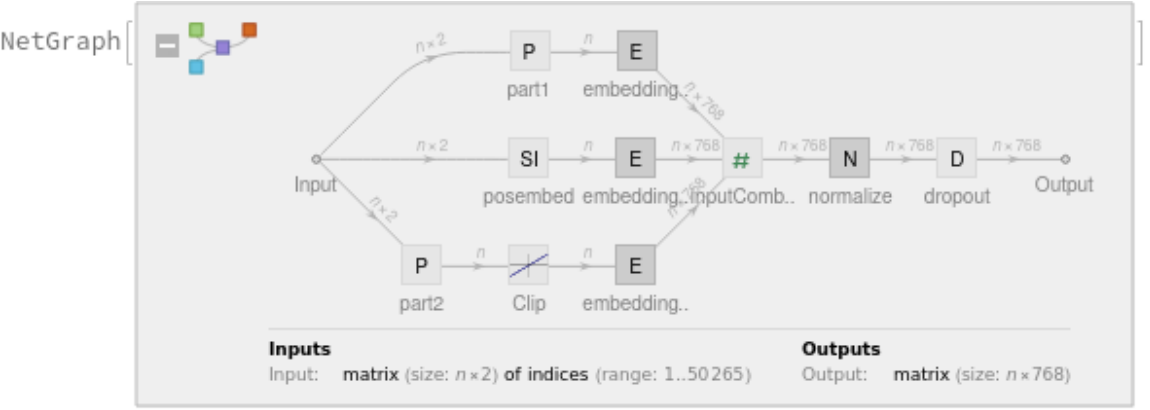
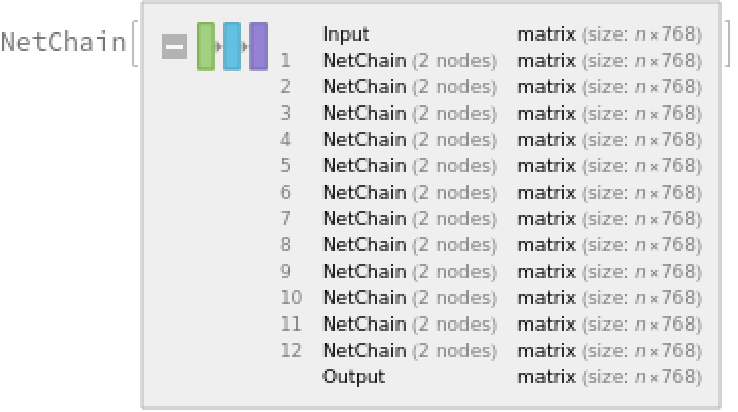
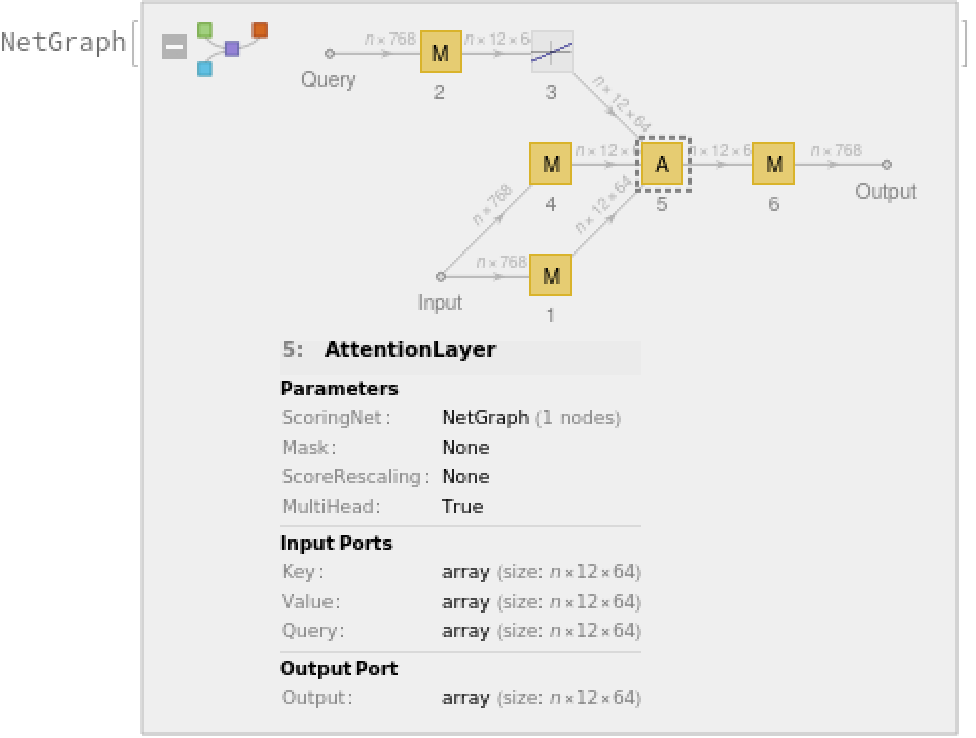
![sentenceembedding = NetAppend[
NetModel["RoBERTa Trained on BookCorpus, English Wikipedia, \
CC-News, OpenWebText and Stories Datasets"], "pooling" -> SequenceLastLayer[]]](https://www.wolframcloud.com/obj/resourcesystem/images/d69/d69b5646-3ef6-42a8-ab78-8b3d56a67a5e/758e4367ff2a828b.png)


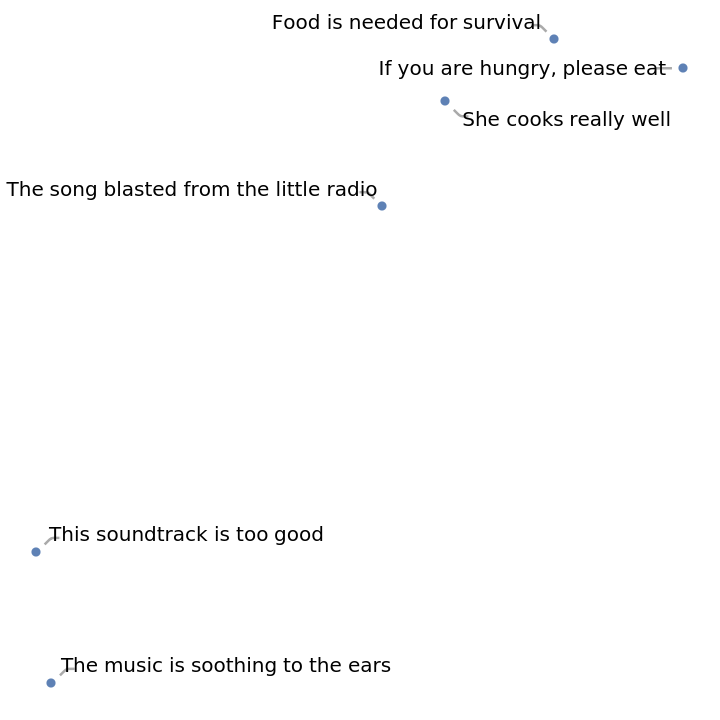
![trainembeddings = NetModel["RoBERTa Trained on BookCorpus, English Wikipedia, \
CC-News, OpenWebText and Stories Datasets"][train[[All, 1]], TargetDevice -> "CPU"] -> train[[All, 2]];
validembeddings = NetModel["RoBERTa Trained on BookCorpus, English Wikipedia, \
CC-News, OpenWebText and Stories Datasets"][valid[[All, 1]], TargetDevice -> "CPU"] -> valid[[All, 2]];](https://www.wolframcloud.com/obj/resourcesystem/images/d69/d69b5646-3ef6-42a8-ab78-8b3d56a67a5e/47d8c61d2bd2b3d5.png)
![classifierhead = NetChain[{DropoutLayer[], NetMapOperator[2], AggregationLayer[Max, 1], SoftmaxLayer[]}, "Output" -> NetDecoder[{"Class", {"negative", "positive"}}]]](https://www.wolframcloud.com/obj/resourcesystem/images/d69/d69b5646-3ef6-42a8-ab78-8b3d56a67a5e/3f8cfdb87f1cf855.png)
![robertaresults = NetTrain[classifierhead, trainembeddings, All,
ValidationSet -> validembeddings,
TargetDevice -> "CPU",
MaxTrainingRounds -> 50]](https://www.wolframcloud.com/obj/resourcesystem/images/d69/d69b5646-3ef6-42a8-ab78-8b3d56a67a5e/2742ed9dfa7f3879.png)
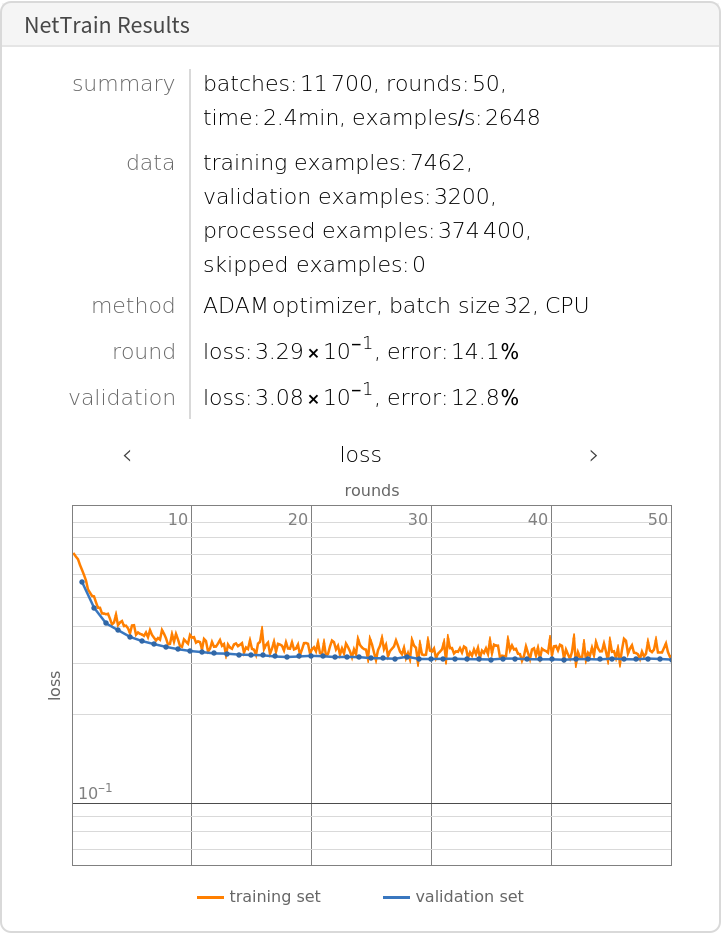
![trainembeddingsglove = NetModel["GloVe 300-Dimensional Word Vectors Trained on Wikipedia \
and Gigaword 5 Data"][train[[All, 1]], TargetDevice -> "CPU"] -> train[[All, 2]];
validembeddingsglove = NetModel["GloVe 300-Dimensional Word Vectors Trained on Wikipedia \
and Gigaword 5 Data"][valid[[All, 1]], TargetDevice -> "CPU"] -> valid[[All, 2]];](https://www.wolframcloud.com/obj/resourcesystem/images/d69/d69b5646-3ef6-42a8-ab78-8b3d56a67a5e/6aaef96f2cd41f7e.png)
![gloveresults = NetTrain[classifierhead, trainembeddingsglove, All,
ValidationSet -> validembeddingsglove,
TrainingStoppingCriterion -> <|"Criterion" -> "ErrorRate", "Patience" -> 50|>,
TargetDevice -> "CPU",
MaxTrainingRounds -> 50]](https://www.wolframcloud.com/obj/resourcesystem/images/d69/d69b5646-3ef6-42a8-ab78-8b3d56a67a5e/094ed1a6e732e15c.png)
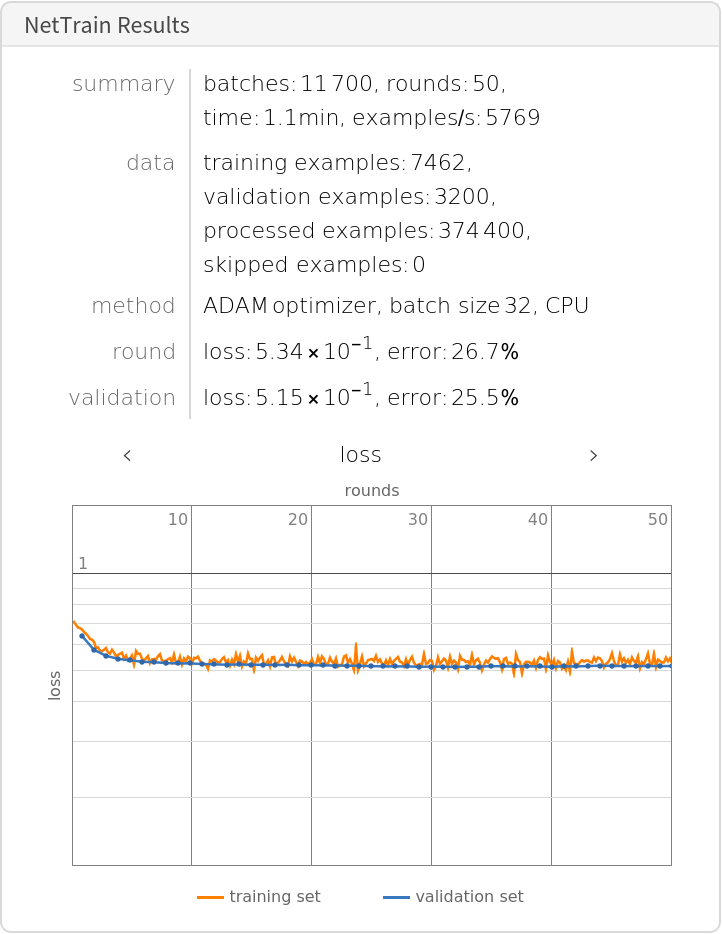
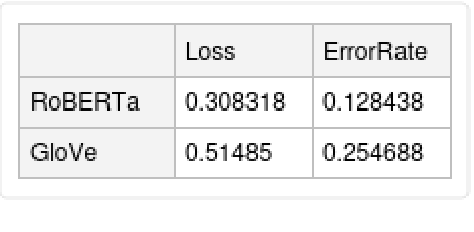
![Information[
NetModel["RoBERTa Trained on BookCorpus, English Wikipedia, CC-News, \
OpenWebText and Stories Datasets"], "ArraysElementCounts"]](https://www.wolframcloud.com/obj/resourcesystem/images/d69/d69b5646-3ef6-42a8-ab78-8b3d56a67a5e/6724b8be6327484f.png)

![Information[
NetModel["RoBERTa Trained on BookCorpus, English Wikipedia, CC-News, \
OpenWebText and Stories Datasets"], "ArraysTotalElementCount"]](https://www.wolframcloud.com/obj/resourcesystem/images/d69/d69b5646-3ef6-42a8-ab78-8b3d56a67a5e/7ab354b097ad2709.png)
![Information[
NetModel["RoBERTa Trained on BookCorpus, English Wikipedia, CC-News, \
OpenWebText and Stories Datasets"], "LayerTypeCounts"]](https://www.wolframcloud.com/obj/resourcesystem/images/d69/d69b5646-3ef6-42a8-ab78-8b3d56a67a5e/066240a92c8c71a5.png)
![Information[
NetModel["RoBERTa Trained on BookCorpus, English Wikipedia, CC-News, \
OpenWebText and Stories Datasets"], "SummaryGraphic"]](https://www.wolframcloud.com/obj/resourcesystem/images/d69/d69b5646-3ef6-42a8-ab78-8b3d56a67a5e/6c1bb39a2b5c3d31.png)